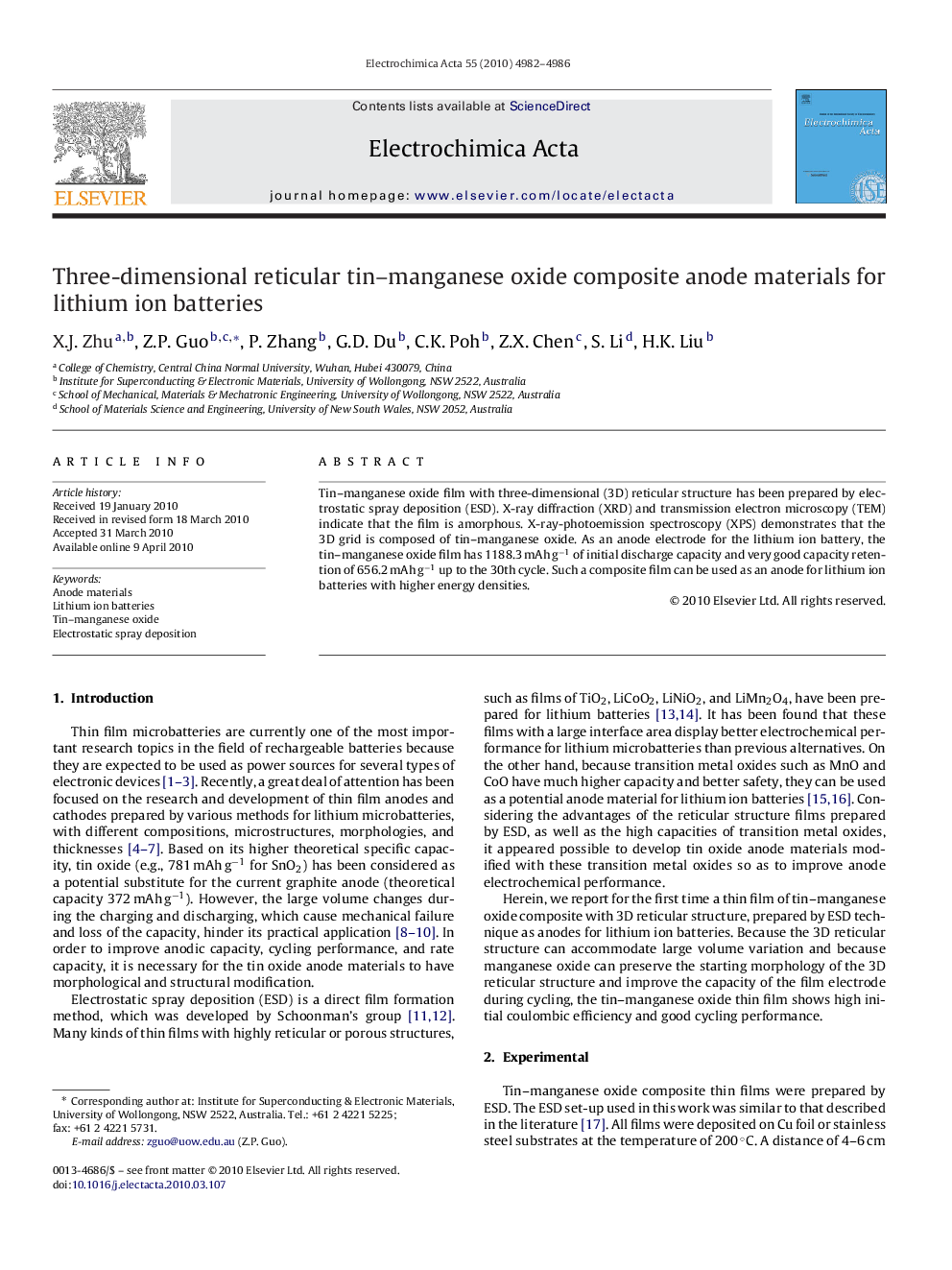| Article ID | Journal | Published Year | Pages | File Type |
|---|---|---|---|---|
| 190574 | Electrochimica Acta | 2010 | 5 Pages |
Abstract
Tin–manganese oxide film with three-dimensional (3D) reticular structure has been prepared by electrostatic spray deposition (ESD). X-ray diffraction (XRD) and transmission electron microscopy (TEM) indicate that the film is amorphous. X-ray-photoemission spectroscopy (XPS) demonstrates that the 3D grid is composed of tin–manganese oxide. As an anode electrode for the lithium ion battery, the tin–manganese oxide film has 1188.3 mAh g−1 of initial discharge capacity and very good capacity retention of 656.2 mAh g−1 up to the 30th cycle. Such a composite film can be used as an anode for lithium ion batteries with higher energy densities.
Related Topics
Physical Sciences and Engineering
Chemical Engineering
Chemical Engineering (General)
Authors
X.J. Zhu, Z.P. Guo, P. Zhang, G.D. Du, C.K. Poh, Z.X. Chen, S. Li, H.K. Liu,
